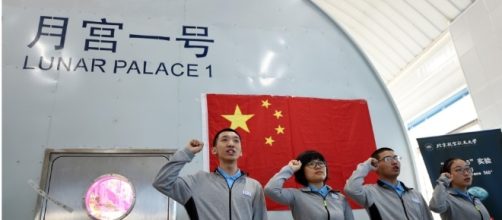Demonstrating that China is serious about pursuing a return to the moon program, Phys.org reports that a simulated Moon Base experiment is being conducted using a 1,170 square foot facility called "Yuegong-1", or "Lunar Palace.” Four postgraduate students, two men, and two women have entered the sealed lab to conduct tests of Closed Loop environmental systems that will be needed for the long-term settlement of the moon.
Lunar Palace to test moon base technologies
The systems in the Lunar Palace include a waste recycling device that uses a bio-fermentation process.
The occupants of the lab will also operate two greenhouses that will grow food plants, fertilized by human and food waste. The crew will also raise animals in a special compartment designed for that purpose. The living module will contain four-bed compartments, a common room, and a bathroom.
The first crew will live in the Lunar Palace for 60 days. The four researchers will be replaced by another team that will stay for 200 days. Then the initial crew will return for a 150-day stay.
The moon is central to China's space plans
China plans to land astronauts on the lunar surface sometime in the late 2020s. Beijing is in talks with the European Space Agency to participate in that country’s moon village project, envisioned as an international lunar base.
China officials have made statements in the past that it envisions mining the moon for its resources, particularly platinum group metals and helium 3, an isotope found in nature only in space. Space exploration is an integral part of China’s ambitions to become a superpower.
NASA may be going back to the moon too
While China proceeds apace with its lunar ambitions, the state of the American space program is in a state of flux. NASA is still, officially at least, focused on its Journey to Mars, which does not include a return to the lunar surface as a result of instructions by President Barack Obama. NASA envisions something called a “lunar gateway” in orbit around the moon to support missions to Mars, though such a facility could also be used to facilitate forays to the lunar surface.
Various media reports suggest that the Trump Administration is taking a look at a return to the moon, likely with commercial partnerships. So far those deliberations have not emerged to any extent from closed doors meetings and have not greatly informed NASA planning to any great extent. The space agency has issued requests for information to the commercial sector inquiring about providing instruments on lunar probes and for providing lunar landers for various payloads headed for the moon’s surface. Reports indicate that the Trump Administration would like to send a crew of astronauts around the moon in an Orion to be launched on a Space Launch System heavy lift rocket in 2019.


